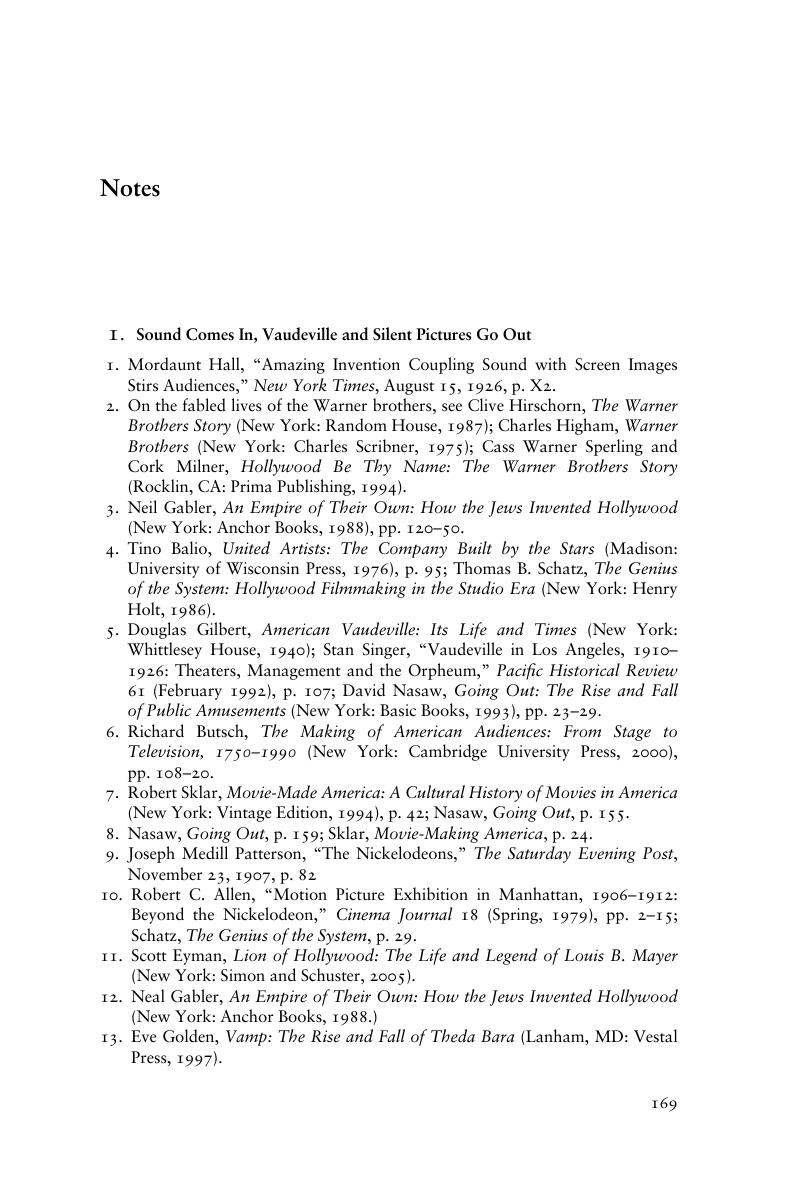Book contents
- Frontmatter
- Contents
- Acknowledgments
- Introduction
- 1 Sound Comes In, Vaudeville and Silent Pictures Go Out
- 2 From Broadway to Hollywood with Groucho, Fred, and Ginger
- 3 Radio Nights
- 4 From the Thirties to the Forties with Kate, Bud, and Lou
- 5 Bogie, Bob, and the Boys at War
- 6 The Postwar Movie Scene
- 7 Make Room for TV
- 8 Putting It Together: Walt Disney Introduces the Baby Boom to Television
- 9 The End of an Era?
- Notes
- Movie, Radio, and TV Listings
- Index
- References
Notes
Published online by Cambridge University Press: 05 June 2012
- Frontmatter
- Contents
- Acknowledgments
- Introduction
- 1 Sound Comes In, Vaudeville and Silent Pictures Go Out
- 2 From Broadway to Hollywood with Groucho, Fred, and Ginger
- 3 Radio Nights
- 4 From the Thirties to the Forties with Kate, Bud, and Lou
- 5 Bogie, Bob, and the Boys at War
- 6 The Postwar Movie Scene
- 7 Make Room for TV
- 8 Putting It Together: Walt Disney Introduces the Baby Boom to Television
- 9 The End of an Era?
- Notes
- Movie, Radio, and TV Listings
- Index
- References
Summary

- Type
- Chapter
- Information
- Mass AppealThe Formative Age of the Movies, Radio, and TV, pp. 169 - 196Publisher: Cambridge University PressPrint publication year: 2010



